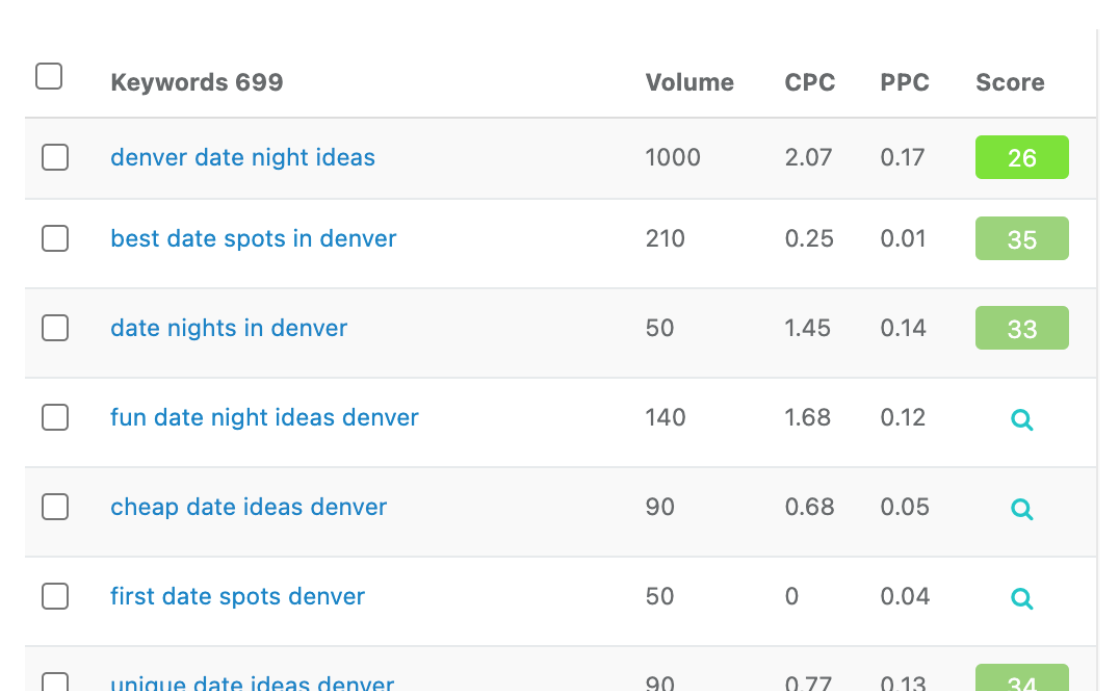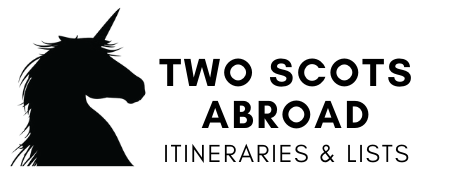This article has links to products and services we love, which we may make commission from.
Affiliate marketing is a fantastic way to build passive income that will continue to flow in, even when you’re spending time on other projects. It’s one of the fastest and most effective ways to begin making an income from your blog or website, even when you’re still building up your following and reputation.
By targeting the right audience, you can enjoy commission while recommending your favorite products and services; and the best part is that affiliate marketing works for all niches.
However, bloggers and niche site owners tend to make a few mistakes that limit their chances of affiliate success.
Here’s our guide on how to make money with affiliate marketing so you can maximise profit, making every post pay.
Since there are many considerations involved, please read the full guide before implementing or making any changes to your affiliate posts.
Make Money With Affiliate Marketing Today
1. Target the Right Audience
When I first started implementing an affiliate process, I applied for popular affiliate programs and inserted the affiliate link into my popular posts.
While this affiliate ‘trickle-down effect’ will make you some income, it’s not the best strategy for affiliate success.
You need to catch the reader with their credit card in their hand to start making consistent sales.
To really start making money from affiliates, you need to flip your affiliate game around and start the process by choosing the right product/service, that are essential to your target audience, that have prime keywords to help you rank your affiliate article on page one of Google.
For example, instead of just adding Amazon product affiliate links to your guide on studying for finals, you can choose a product that you know will help students study and target the keywords they would be using to search for such products.
Why not do both?
You can make money through both methods, but the more targeted approach will likely make more.
Track the income to see which type of post brings in the most income.

So How Do I Rank on Google?
This process is called search engine optimization (SEO). If you are not familiar with SEO I suggest you read our this guide and this article to keyword research.
Part of SEO is keyword research.
This helps you target keywords with a decent volume and low competition so you can appear on page one of SERPs (Search Engine Results Pages) in Google.
SEO will allow you to reach the right audience who want to buy the affiliate product or service.
We call this process writing ‘money-making’ posts. You can make affiliate income from social media but you need an engaged audience to do so. An active newsletter list is another funnel that you can target.
For us, SEO offers the best outcomes for our travel and food sites when it comes to monetising through affiliates so this guide is going to focus on using SEO.

2. Choose Products/Services to Promote
When deciding what affiliate products to promote, don’t just choose the popular ones.
Really consider the following things:
- The affiliate and the product. Do you stand behind the company? Is it something your audience needs or wants? Is it a high enough price point to actually make money from? What commission will you receive? What is the cookie window?
- How a buyer would purchase the product. Will they buy right away or consider their decision first? This will affect what kind of marketing you need to do.
- What is the user intent of the target audience? For example, what does the Google searcher asking for ‘best neighborhoods in New York’ want? Hotels? Houses for sale? What does a searcher asking for “best slow cooker” want?

3. Consider the Buying Cycle
You need to appeal to readers who are ready to purchase in order for them to get out their credit card and make the purchase right away.
So be sure you choose keywords that target the decision/buying stage.
These people are beyond the information-gathering stage and are ready to buy as soon as they find the right product.
Using buying words and phrases will attract decision-stage readers. Here are some example buying words:
- Product reviews
- This product vs That product
- Best luxury product or best budget product
- For women … for men … for families
If you think you have a chance of ranking on page one of Google with your post, then don’t worry so much about the volume of the keyword. It’s better to rank well for smaller volume keywords than to not rank for high volume ones. **
I used to believe you needed a large audience to make money but that’s not true, you need a targeted audience. With affiliate marketing, it is better to have a hundred views that convert, than a thousand that don’t.
For example, one of my targeted money-making posts makes 3x the commission in comparison to another post that receives a ton of views but isn’t targeted.
Affiliate links work much better in a targeted post.

4. Solve a Problem
You can add an affiliate link to just about any post, but the ones that will begin to make money are the ones that solve a problem.
The best way to tackle this is to brainstorm your audience’s pain points. Think about an issue that causes a problem for your audience – something they struggle with.
What are the top three things that keep your audience up at night?
Such as how to source a recipe ingredient they can’t get at home, or how to choose the best elliptical machine when there are so many similar options on the market.
Those are the affiliate products you should introduce to your audience.
After brainstorming, conduct keyword research to see if people are actively looking for a solution to that problem on Google. If there is search volume, and the post you write solves the problem, you will begin to make affiliate sales.
Note: Don’t forget to consider whether you can compete against the top ten posts in the SERPs. If there are already dozens of people solving that problem, you might have a hard time getting your solution in front of readers.
Write an in-depth and very useful guide for your audience about that pain point. Identify the issue, empathize with the issue, and introduce your product that solves the issue.

5. Choose The Right Affiliate Programs
When choosing an affiliate program, at the very least you have to consider the following:
- Commission – What percentage will you make? Or is there a flat fee you will receive per sale?
- Cookie Window – How long does a reader have to purchase in order for you to get the commission?
For example, Booking.com’s direct program gives a 25% commission on the amount they make (not the full hotel booking amount) with no cookie window, whereas Amazon has a sliding scale for commission, product depending, and a 24-hour cookie window.
More advanced site owners will also consider the overall company conversion rate before applying too because the company’s ability to make the sale after you’ve led a reader to them is also very important.

6. Consider the Types of Affiliate Programs
Some companies choose to host a direct affiliate program like Booking.com and Amazon Associates.
Others go via a third party where you sign up for the third-party program (like Commission Junction or Awin), then you must also apply for the individual affiliate program.
There are companies covering every niche thinkable in these third-party sites.
Here are some of the affiliate marketing programs we use on our sites (travel, food and SEO):
- Amazon Associates – Direct Amazon product sales
- ShareASale – Third party, shop for merchants once you sign up
- VigLink now Sovrn Commerce – Third party, shop for merchants once you sign up
- CJ – Third party, shop for merchants once you sign up
- Partnerize was Performance Horizon – Third party, shop for merchants once you sign up
- Awin – Third party, shop for merchants once you sign up
- Food52 – Recipes, kitchenware
- Avantlink – A collection of international merchants.
7. Focus On The Perfect Products
There are a few ways in which you may be choosing the wrong products or services.
Firstly, you are pitching a product that just does not convert.
It might not be right for your audience, it might have poor conversion rates for the company selling it, the product or service is not available all year round, you’ve failed to optimize the post for that product (see next section) and/or you can’t rank for target keywords (see above).
Secondly, you only focus on low-priced products with low commission rates which in return does not make you much in revenue.
Naturally, in the beginning, you may not want to target high-value products because you don’t think you can sell them. However, you need to break out of that mindset.
It’s not about the price of the product, it’s about identifying a need and finding a product that fulfills that need.
A low commission rate isn’t always a negative. If you sell a lot of the product, you create a high average order rate (AOV).
In some cases, this can earn you additional income for bringing in a lot of sales.
Note: For some affiliates, the reader doesn’t have to buy the product or service you recommend for you to receive a commission.
For example, with Amazon, don’t be surprised if you see pet-related goods showing up in your reports when you promote wellbeing products.
Although dogs are a great source of happiness, it just means the reader has read your guide, gone through to Amazon from one of your product links then continued shopping for other items.
This isn’t always something to be celebrated though as it can indicate that the reader did not complete the buying cycle for the targeted keywords/product or service.

8. Optimize Your Affiliate Posts
You may have SEO down but your content isn’t converting for affiliates.
There are many reasons that your links might not be converting, such as lack of calls to action, placing it in the wrong spot in the post, and not making the buying signals clear enough.
To fix this issue, see below for some great ideas.
Deep Linking
For many affiliate programs, in-text affiliate links that are naturally placed within context convert better than widgets and images.
Widgets can slow your page speed down too.
Clear Calls to Action (CTAs)
CTAs are buying signals, like buy here, act now, check prices, reserve your spot, etc.
Not including CTAs might leave your readers without a clear understanding of what they should do.
If you use Gutenberg you can use the coloured boxes function, bottoms or separating lines to make callouts stand out.
You can also create your own CTA boxes using this code: <div style=”background-color: #BBF1F5; padding: 1.0em; max-width: 25.0em; margin: 1.0em 0; border: solid 1.0px #BBF1F5;”><strong> Don’t miss out. Buy today! </div> Example:
Change the colour coding to match your brand colours. You can also change the thickness of the box.
Linking is such an important part of the post-building process.
Sense of Emotion
Every good marketer knows that fear sells. If you can paint a picture from personal experience which outlines why the reader should buy the product and add a sense of urgency or excitement, you could increase your selling power. Remember, solve a problem!
Avoid Affiliate Stuffing
Just like keyword stuffing, you can overdo affiliates too. Sure you want to encourage click-throughs, but having an affiliate in every paragraph looks spammy and can be overwhelming.
Sell naturally by putting a personal spin on it. If you’re trying to sell products you don’t use yourself, it will come across as unnatural and salesy.
Use Professional Plugins
There are a couple of affiliate plugins which improve the user experience (UX) as well as making items stand out.
Mobile User Experience
Do not ignore mobile user experience. Google now ranks the mobile version of your site, so always evaluate how your posts look to mobile users.
Ask a friend to check for you, sometimes it’s difficult to see issues with your own posts.

9. Track Your Affiliates
Affiliate marketing is not a set-it-and-forget-it process!
Question any affiliate course that screams ‘make money while you sleep’.
Sure, you will be selling while you get shut-eye but to make a lot of money you have to stay on top of securing Google rankings through SEO and working out what affiliate placement is working.
That’s why we prefer to refer to affiliate marketing as ‘nurtured income’ as opposed to passive income – as it will need some attention.
If an affiliate program offers a way for you to track the specific link that is being selected, use it.
This will give you great insight into what links are converting, and what links aren’t.
Check frequently to see what placement is working and be willing to adjust it when it’s not.
Is it a deep link, a buying signal CTA, a button or a box? Can you replicate what it working elsewhere?
If it’s not working, tweak it. Business is about calculated risk.
What products are selling? Brainstorm more content, do keyword research and publish.
If you have ads running on your site it might be worth removing them for money-making posts or at least manipulating ad placement, so they don’t detract from the money you could be making.

10. Build Relationships
Many bloggers are resistant to following the advice of affiliate partners, and believe me, I was one of them.
For example, whenever I was contacted by a company who wanted me to become an affiliate and start mentioning their product in my posts, I wondered why I should give a company free advertisement on my site. They should pay for that exposure, right? Not necessarily.
While some affiliates will pay for advertisement in addition to the affiliate commission, most won’t.
Effectively, the affiliate commission is your payment for advertising their product.
You become partners and agree to positively promote their product on your site, which begins to make you a trusted brand ambassador.
One of my Facebook followers asked if I trusted GetYourGuide tours, which I am an affiliate for.
I could honestly say yes because I’ve used them personally.
Create an open dialogue with affiliate partners.
Email often, discuss ideas, ask for reports if they are not readily available.
Some partners will be into this, others won’t care. You just have to keep wooing!
Don’t ignore the wee guys.
Some of our most successful affiliate partners are brands you’ve probably not heard about.
Don’t disregard every email from affiliates as spam. Be very diligent with the companies that find you via your top ranking posts.
They understand SEO, too. It’s a killer combo for affiliate income.
Don’t be afraid to ask for placement fees if you can guarantee Return On Investment (ROI).
Some companies do have a budget for this. It is more likely that you will have success if the company contacted you.
Especially if they found you on page one of Google for a buying keyword.
Attend industry events so you can meet partners face to face.
Invite your favorite partners to conferences.
If they are going already, arrange to meet for a casual drink or more officially during a speed-networking slot.

11. Don’t Think You’re An Affiliate Expert
We see this too often.
Bloggers make a month of sales and suddenly they know everything about affiliates, so they start a company telling other bloggers how to make money from affiliates.
Affiliate marketing is a long-term commitment.
It takes at least a year of analysis to understand the full cycle of your affiliates: the ebbs and flows of traffic, the buying trends, the low season, Black Friday/Cyber Monday rush, the damn cancellations and returns.
Sure, get excited about the first affiliate sales, but don’t get too emotionally attached until the monthly revenue is consistent and growing.
Would the bank give you a mortgage on your current sales?
Readers, always check the credentials of those selling you advice and courses. Make sure they can back up what they say with actual data and proof.
Check the testimonials for blogging courses are by bloggers and site owners, not Instagram accounts owners. These are completely different platforms.

Current Affiliate Issues
When you start really digging deep into affiliates and improving your conversions, you will likely run into a few issues that you need to be aware of so you don’t get burned.
- Affiliates can change contracts when they want and they do! Laura once applied to a program that offered 12% commission only to find they changed the commission rate a month later to 1%.
- Affiliate partners change programs and they may or may not tell you about it. That means you have to change the links to the new affiliate program or they will become defunct.
- Many affiliate dashboards are confusing and require a degree to understand and navigate. We’re spoiled by Google Analytics/Search Console. Why can’t every affiliate have something similar?
- When a reader selects your affiliate link and it goes through to the mobile app instead of a browser, are you making that referral sale? With the majority of our readers viewing our posts via mobile it is something we should all be questioning our affiliate partners.

Final Words
The biggest change you will see in affiliate earnings will be when you start thinking strategically about your affiliate partnerships and links, rather than just tossing a link in whenever it seems convenient.
Start acting like a business person who is in it for the long run and is confident in making strategic risks for increased gains.
About the Authors
Gemma is the owner of a number of travel and lifestyle websites including Two Scots Abroad Travel Guides. Laura runs a portfolio of travel, food, and lifestyle sites. They both love to travel, drink wine, and increasing their website traffic through SEO!

